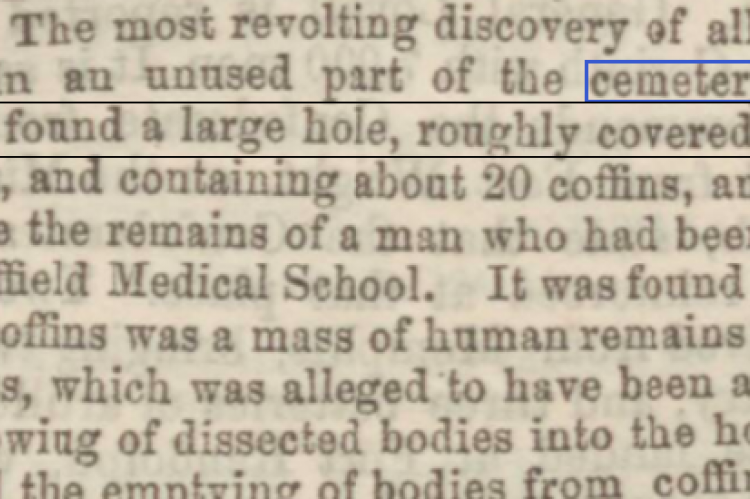Public discussion of burial practices can become very emotional.
Mass and grave are the two most emotive words used in recent times. Both in public & academic discourse.
When I first started studying these things I thought mass grave would be easy to understand. But. Not so!
Over the next few months i'm going to explore the use of mass grave in an attempt to better understand our funerary practices through time.
A key part of the exploration will be comparing mass grave with common grave. Best place to start this exploration will be with a few definitions.
Let's start with the easy one.
What is a common grave?
A common grave is a communal grave containing multiple interments. They appear to have been a key part of cemetery management since the 1830s onwards. In the wonderful Mount Jerome cemetery in Dublin 25% of all burials are in common graves. Common graves appear to be all about affordability. If one couldn't afford to purchase a private grave then one paid for a grave to be opened and closed. In many cases this involved a common grave and not a separate grave per coffin. I presume we will be able to find pricing lists for such services in Irish & British cemeteries.
I recently attended a funeral in London and the grave was over 3 m deep. When I mentioned this to a colleague in Dublin he told me that he used to work as a social worker in London in the 90s and 00s and often used to attend 'paupers' funerals where common graves were used. He said he often saw multiple coffins going into the same grave. That's what a common grave is. Multiple burials, one grave. Coffins and funeral rites involved. But lower costs and more efficient use of available space.
One key question to explore is how long it takes to close a common grave. Is it days or could the grave be opened for more than a week?
The next question I'd love to answer is what are the standard dimensions of a common grave and has this changed over time? And are there differences depending on geography. I suppose the question emerges too as to whether common graves were used in institutional burials.
How is that then different to a mass grave?
A common grave appears to be a formal business product offered by some or all of our cemeteries.
Mass grave can be a generic term for a grave containing multiple burials. By definition then a common grave can be a mass grave.
Therefore, defining a mass grave is the hard part of this discussion.
We need more information on these matters so we can properly consider the various scandals relating to the treatment of our poorer dead in the past.
And if we are writing academic discussions of mass graves then we need to start with a definition of what that term means. I'll write another post soon laying out the different definitions of mass grave that we encounter.
Reading
https://library.leeds.ac.uk/special-collections/collection/729
This is a very clear website which outlines types of common graves including lockup and public graves.
https://www.sheffieldforum.co.uk/showthread.php?t=112252
Explore the 1862 cemetery riots in Sheffield - the use of a lock-up common grave, bodysnatching & medical school body part disposal come together in a grissly scandal.
https://www.irishtimes.com/news/ireland/irish-news/family-challenge-glas...
Gone-over graves in Glasnevin.
https://www.historyireland.com/20th-century-contemporary-history/coerciv...
2018 academic research into patients, prisoners and penitents of which burials and burial records are an interesting element.




